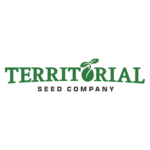Whether you’re whipping up a batch of homemade pesto or canning that abundance of cucumbers from your garden, homegrown herbs are a great way to add flavor and freshness to your kitchen. If you’re adventurous, you may even consider growing some medicinal herbs. With a plethora of herbs to choose from, the opportunities are endless!

If you’re interested in planting an herb garden and don’t know where to start, look no further! Growing your own herbs from seed is a great, inexpensive way to add variety to your garden. Herb seeds should be started indoors approximately 6-8 weeks before your anticipated transplant date. Starting herbs seeds indoors is the same as any other seeds – check out the blog post “Seed Starting Indoors with Grow Lights.” Tiny seeds, such as thyme, oregano, and savory, should be lightly pressed into the soil but not covered. Larger seeds, such as cilantro/coriander, should be covered with soil at least the same thickness as the seed. Herb seeds need 14-16 hours of light daily, and the soil should be moist but not soggy.

Once your seedlings are large enough, the soil is workable, and the weather has warmed up, you can transplant! You can transplant hardier herbs after the last frost, but you’ll want to wait to transplant tender herbs until the weather has stabilized. As always, make sure you harden off your seedlings before planting them outside. When planting, make sure you consider the mature size of the plant, as overcrowding can lead to reduced harvests due to stunted growth and encourage the spread of disease. Keep an eye on the weather as frost and low temperatures can severely damage tender herbs such as basil – you may need to cover these plants or bring them inside if temps get too low.
Quick tips for a successful herb garden:
- Herbs need at least six hours of sun a day but do better in full sun – the more light they receive, the more flavor and scent they will have.
- Thoroughly water in-ground herbs once a week, allowing the water to reach a depth of at least 8 inches to ensure the roots receive enough water. Container-grown herbs need water more often, potentially every day. Avoid letting the plants wilt between waterings, but don’t oversaturate the soil.
- Utilize mulch to protect perennial herbs over the winter and to maintain soil moisture during the summer.

Herbs can be used fresh or preserved through drying or freezing. Whether for fresh use or preserving, harvest shortly before, and harvest only what you’ll need. You can store certain herbs in the fridge, but they will lose flavor over time.
Quick Harvest Tips:
- Most herbs have the best flavor if harvested just before flowering.
- Stay on top of harvesting to avoid letting herb plants flower, as this may make the herb bitter and woody, and will reduce productivity.
- Oil content is highest mid-morning – you’ll get the best flavor by harvesting then. Try to avoid harvesting after or during the hottest hours of the day.
- Keep harvested herbs out of bright light. Wash with warm water if necessary and pat dry or use a salad spinner to remove excess water and use or process as soon as possible.

